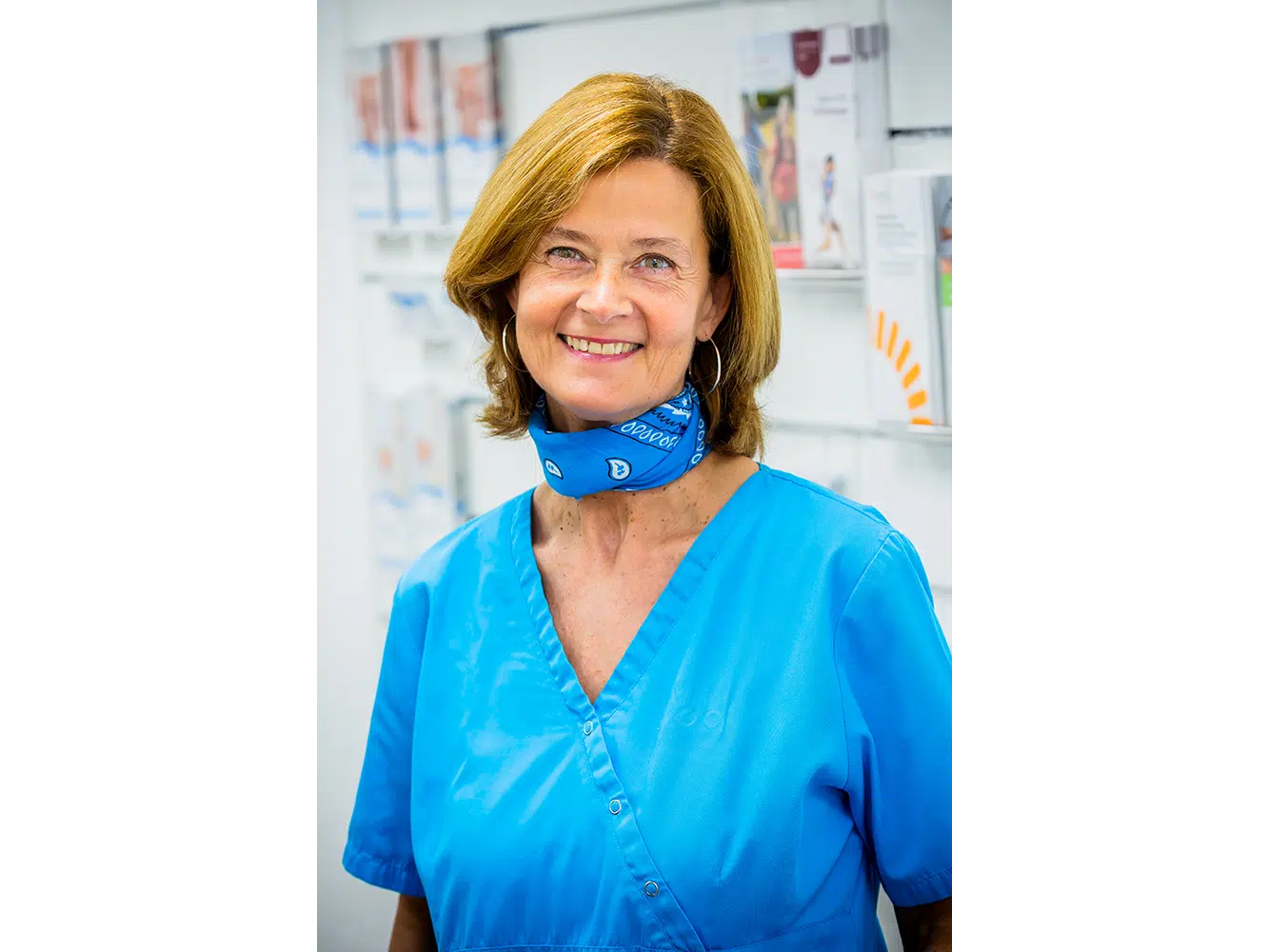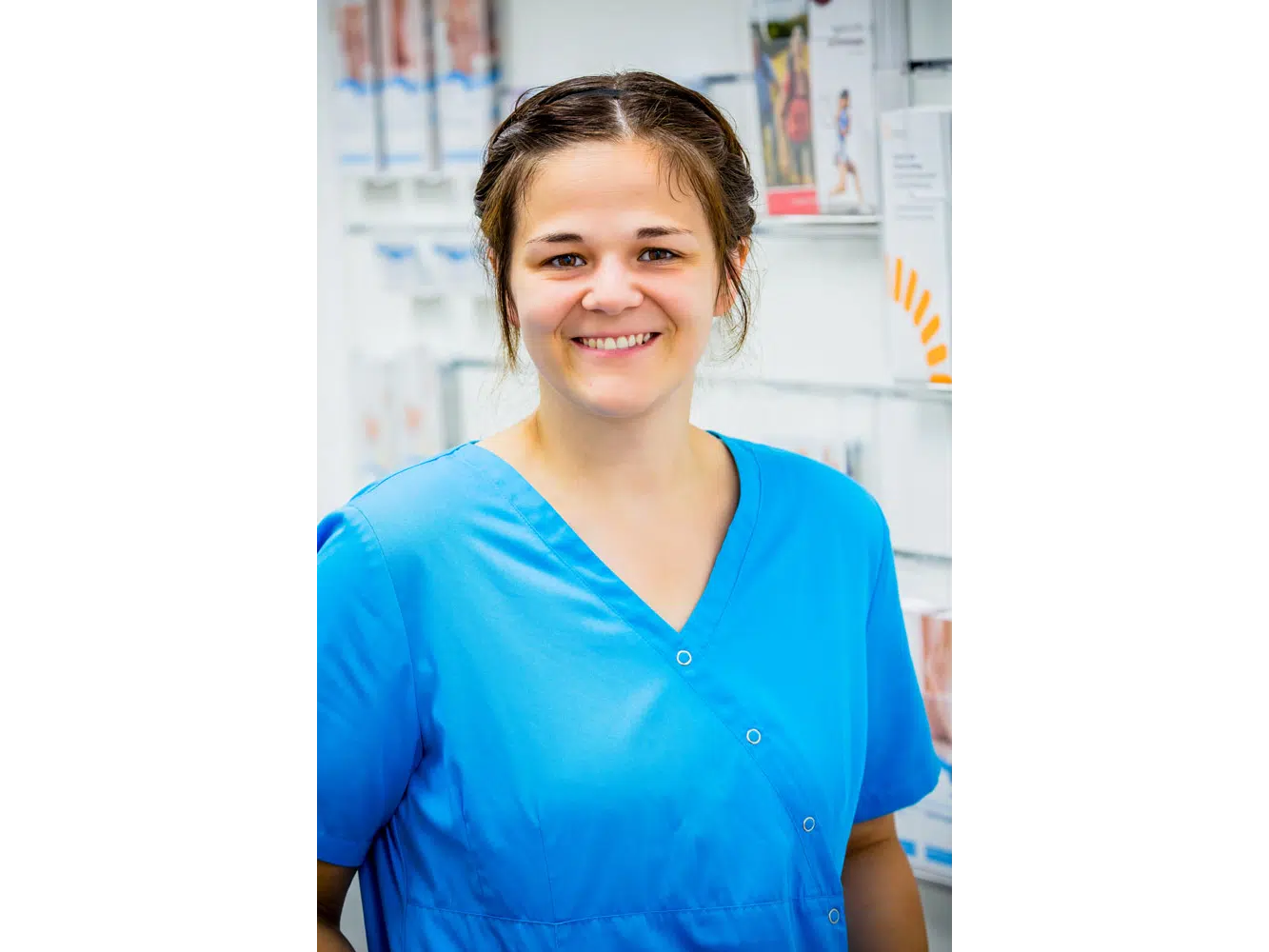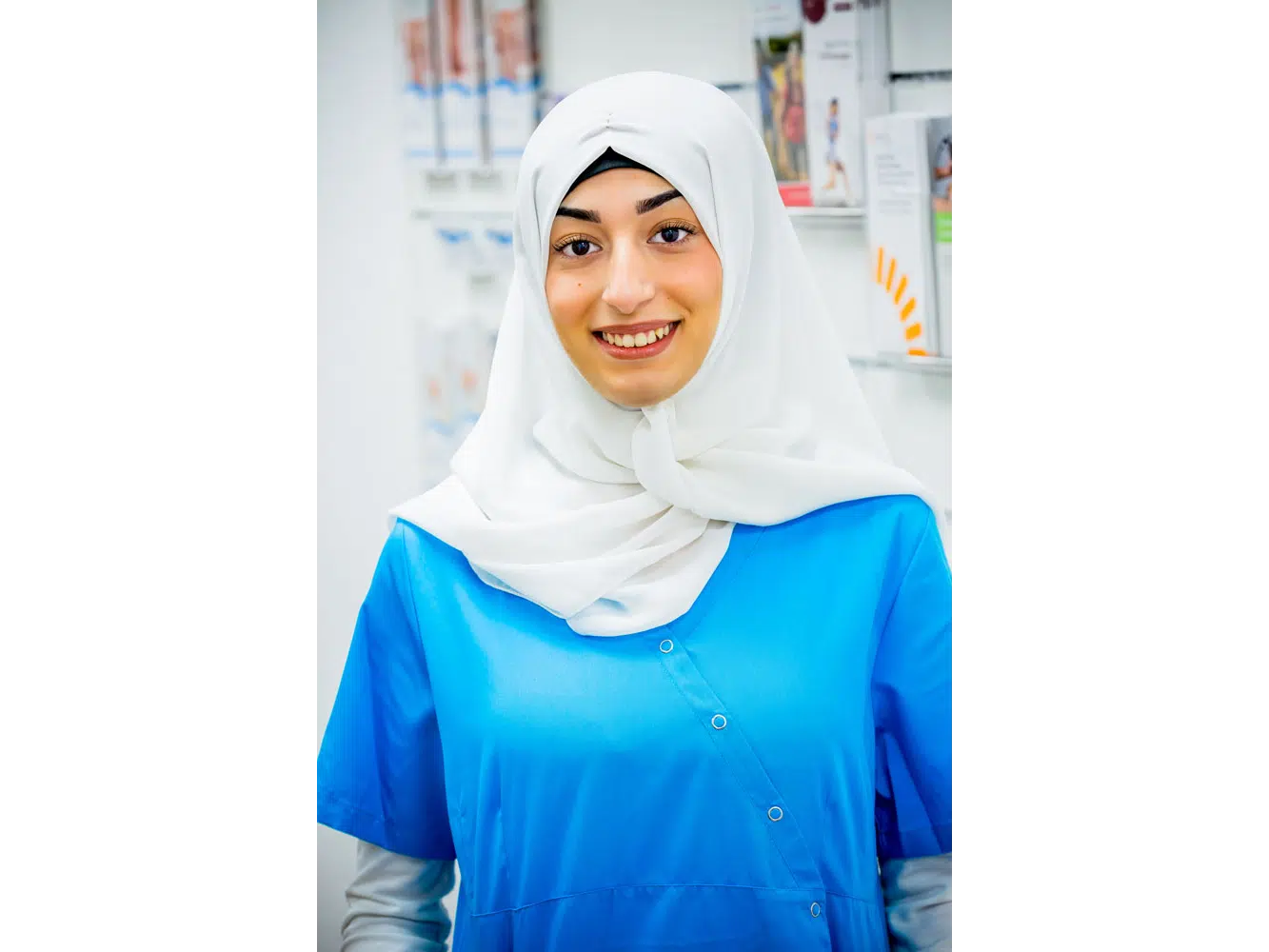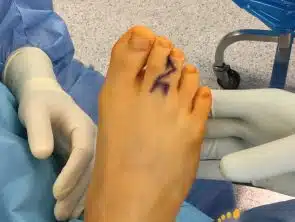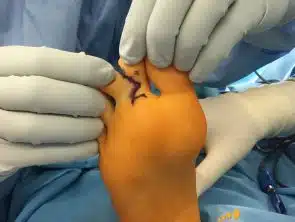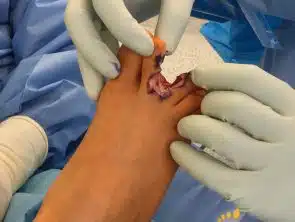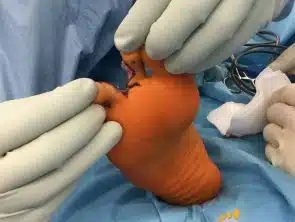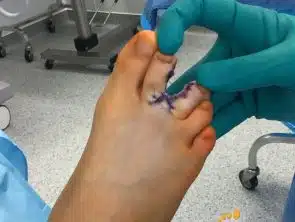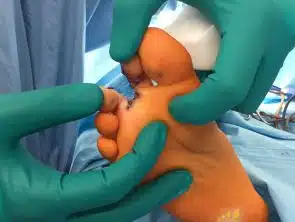Nur weichteiling zusammengewachsene Zehen (kutane oder häutige Syndaktylie) können durch relativ einfache Eingriffe getrennt werden. Durch eine besondere Schnittführung werden Hautlappen gebildet, die um die getrennten Zehen gelegt werden und den neuen Zehenzwischenraum bilden.
Der Eingriff kann ab dem zweiten Lebensjahr durchgeführt werden. Bei einer rein kutanen Syndaktylie kann der Eingriff auch in einem höheren Alter erfolgen. Dies erleichtert den Eingriff (größere Zehen) und sichert bessere Ergebnisse.
Die Zehentrennungsoperation wird ambulant durchgeführt.
The zig-zag approach to the commissure allows for triangular based flaps to be created to assist with coverage of the digits. Planning the incision should start distally at the fingertips where planning for the paronychial fold begins. The typical technique for the development of these folds involves laterally based triangular flaps that, once released, will be sutured into the respective digit creating a new nail fold.[12] Next, the dorsal and palmar incisions are drawn proximally in a zig-zag fashion to create the previously described triangular flaps. It is important to ensure the flaps are drawn in such a way that the dorsal and volar flaps will not interdigitate with each other.[8] As the incision is planned distally, the planned height of the webspace is determined. Once determined, a dorsal rectangular flap is typically drawn with a volar triangular based flap. Once the incisions are drawn, the case starts distally, starting with the paronychial folds and progresses about the dorsal incision. It is important to create full-thickness flaps as you proceed with your dissection. Careful dissection is carried out to identify the neurovascular bundles. Typically, these bifurcate proximally, but cases have been noted with a more distal bifurcation. If a distal bifurcation is noted, it is important to carefully dissect each neurovascular bundle so they can be incorporated into the correct digit. Once the dorsal dissection is completed, attention can be turned volar, and the separation can be completed. Next, tension-free closure is performed. If any areas of skin cannot be closed adequately with tension-free closure, full-thickness skin grafts from the hypothenar eminence, instep of the foot, wrist, cubital fossa, or groin can be obtained to fill the defects.[2][3][4][5][8][13] When selecting a skin graft, it is important to take from an area that has a lack of hair growth, as this could lead to an undesirable cosmetic result. It is important to avoid split-thickness grafts as these are known to contract up to 50% and will achieve an undesirable post-operative result.[3]
Nachbehandlung nach der cutanen Zehentrennung
Der Verband muss täglich gewechselt werden, um eine Mazeration der Hautlappen durch übermäßige Feuchtigkeit zu verhindern. In der ersten Woche wird eine eingeschränkte Mobilisierung unter Teilbelastung im Verbandschuh, sowie Hochlagerung empfohlen.
Nach zwei Wochen kann mit Bewegungsübungen angefangen werden, um die Beweglichkeit der Zehengelenke wieder herzustellen.
Fallbeispiele
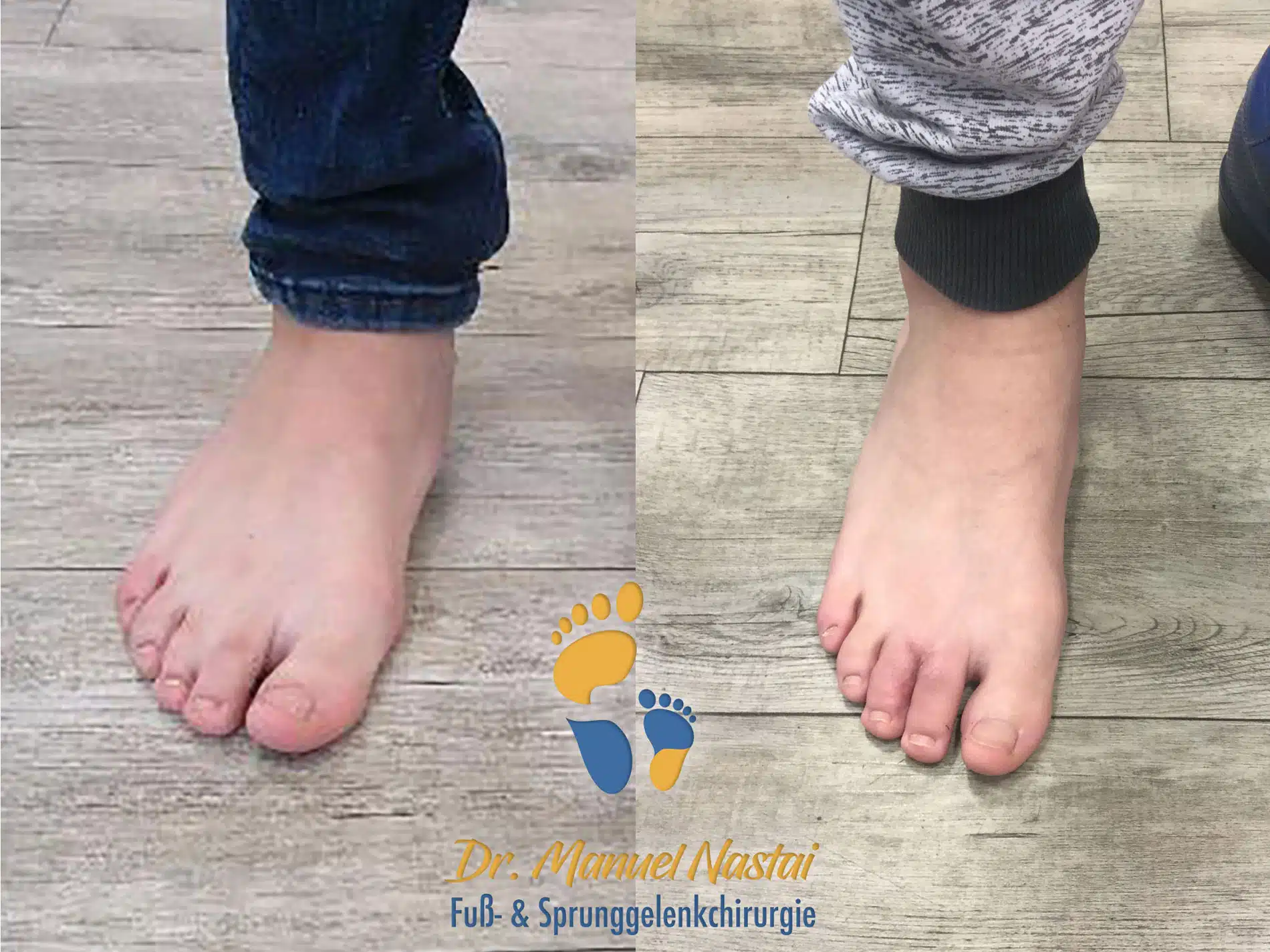
Zehentrennung
Patielle cutane Syndaktylie 2.-3. Zehen




